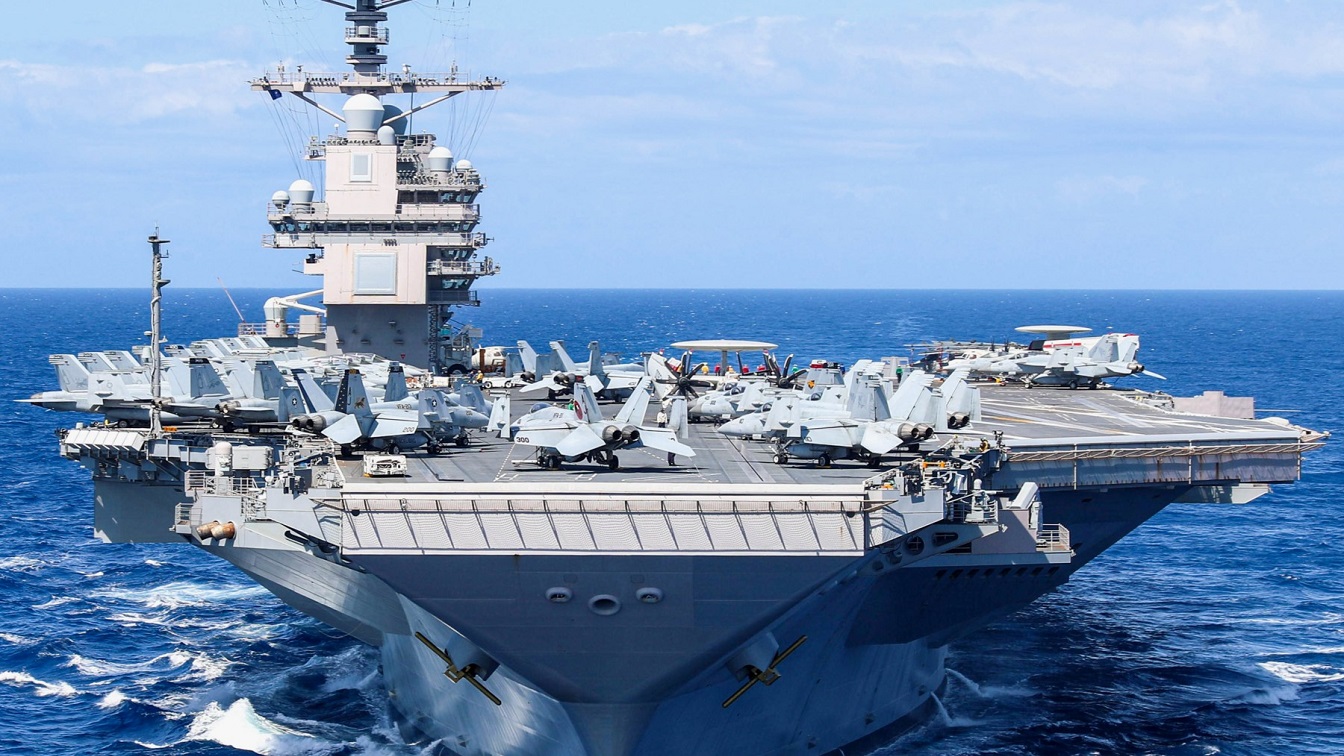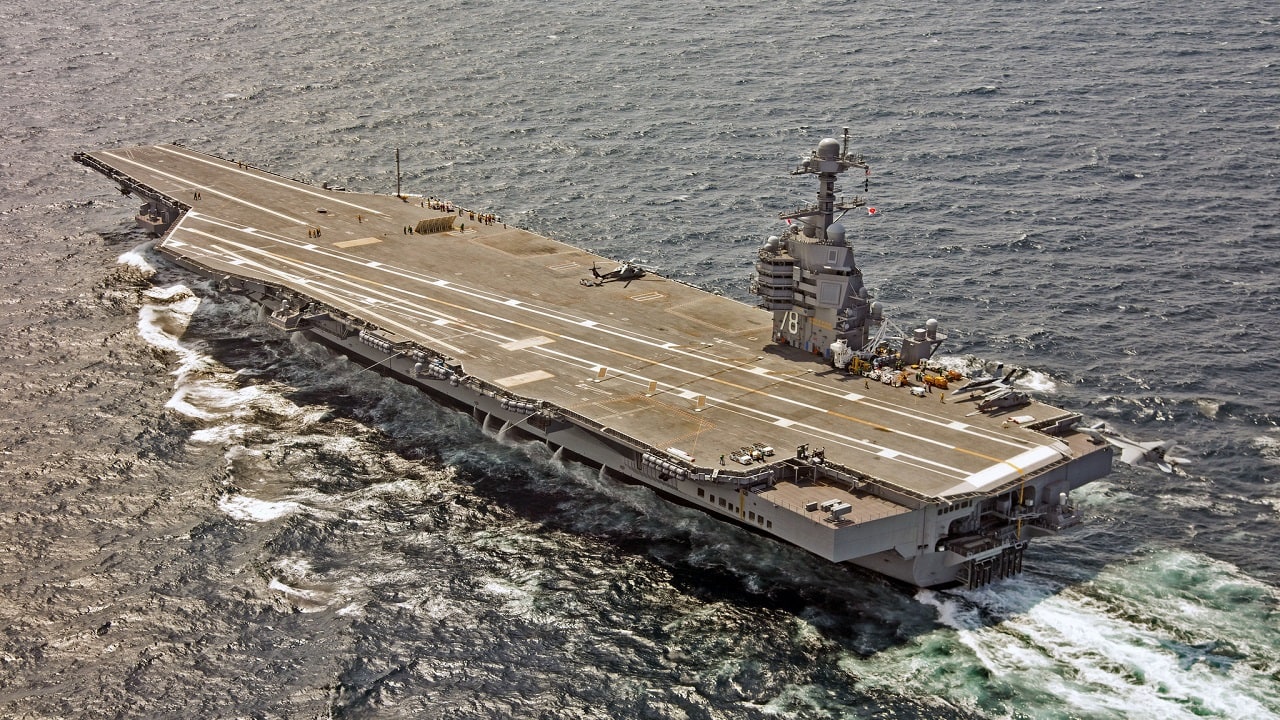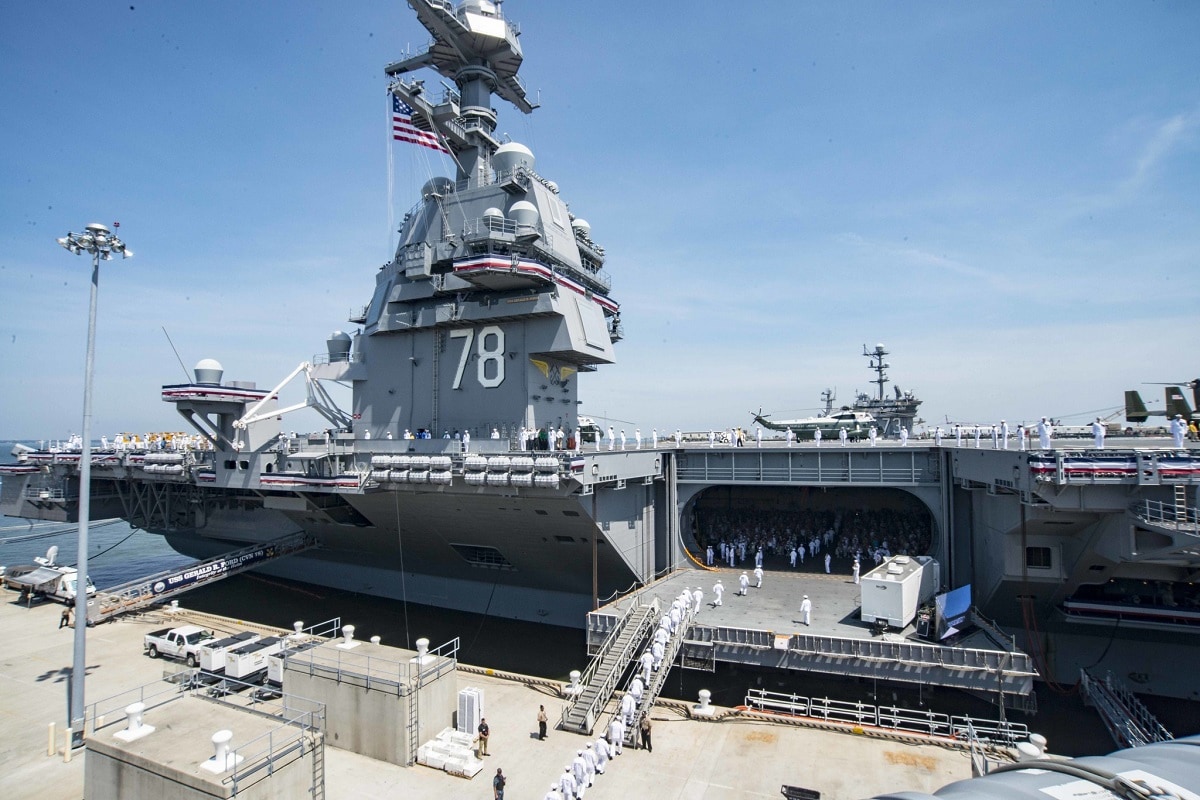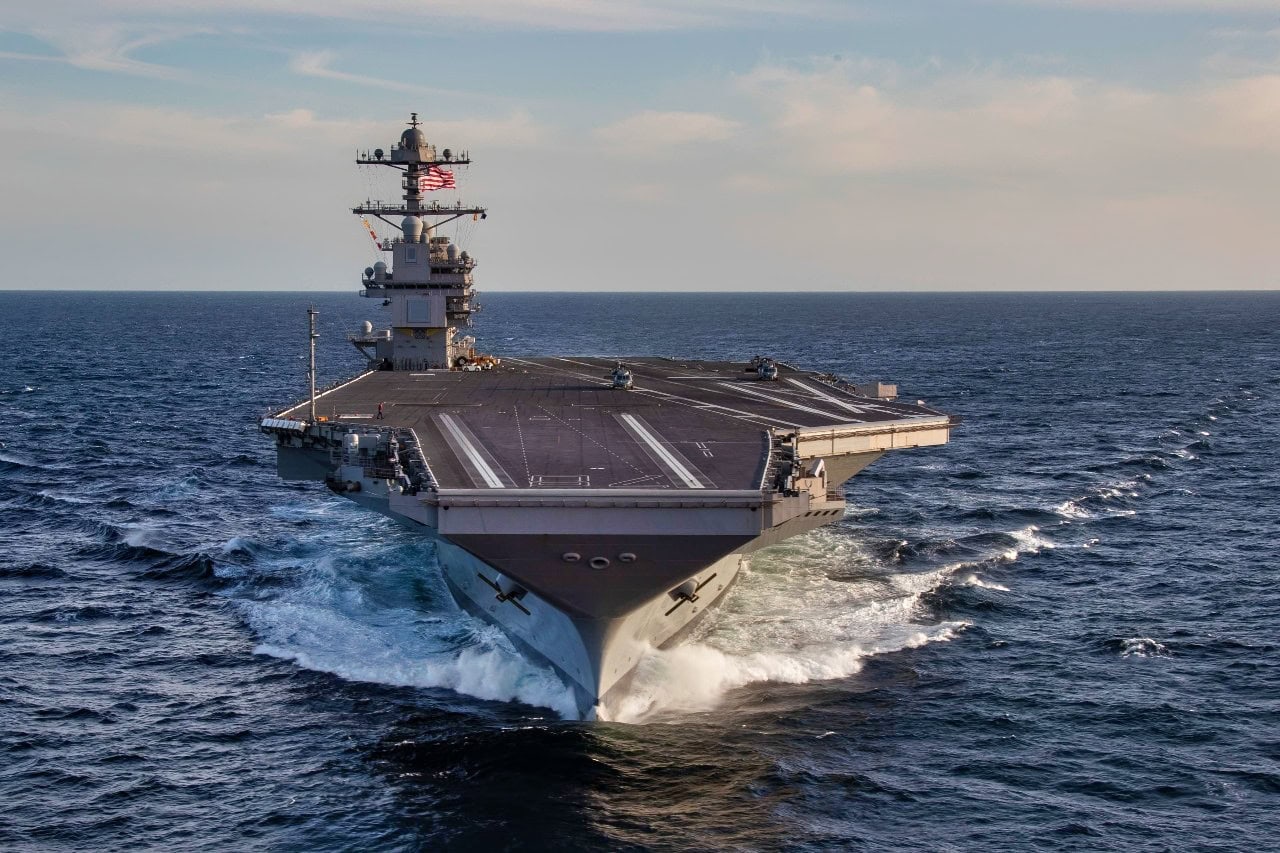Key Points and Summary: The USS Gerald R. Ford (CVN 78), the first in the new Ford-class aircraft carriers, aims to replace the aging Nimitz-class ships, featuring advanced technology and significantly reduced crew requirements.
-Despite its ambitious goals, including cost-saving measures and increased efficiency, the Ford has faced persistent operational and technological challenges, notably with electromagnetic systems and sortie-generation rates. The total cost of the Ford-Class program is a massive $120 billion.
-Issues like faulty welds and procurement debates remain.
–As the Navy aims to expand its fleet, the Ford-class faces pressure to overcome these hurdles quickly, ensuring future U.S. naval supremacy depends significantly on solving these lingering technical and logistical challenges.
Why America’s $13 Billion USS Gerald R. Ford Aircraft Carrier Is Still Facing Major Problems
The USS Gerald R. Ford (CVN 78) is the lead ship in this new Ford-class of aircraft carriers. This ship marks the first new class of carriers in more than 40 years, and as it enters service, it will begin the phased replacement of the Nimitz-class carriers. CVN 78 was ordered from Newport News Shipbuilding on September 10, 2008, and commissioned into service in 2017.
The Gerald R. Ford-class was intended to be the forward asset for crisis response, power projection, and early decisive striking power in any major combat operation. These aircraft carriers and their carrier strike groups will constitute “the core capabilities of the US forward presence, deterrence, sea control, power projection, maritime security and humanitarian assistance,” in the words of the US Navy official release on the ship’s mission statement.
Basic information on the aircraft and its armament is:
Manufacturer: Huntington Ingalls Industries Newport News Shipbuilding
Service: U.S. Navy
Armament: Evolved Sea Sparrow Missile, Rolling Airframe Missile, CIWS
Propulsion: Two nuclear reactors, four shafts.
Speed: 30+ knots
Crew: 4,539 (ship, air wing, and staff).
Aircraft: 75
Manpower, Operations, and Design Problems
The design of these ships was geared explicitly towards saving more than $4 billion in total ownership costs over their 50-year service life—considerably less than the Nimitz-class ships it is replacing. Among other efficiencies, the CVN 78 configuration is designed to operate with nearly 700 fewer crew members than a CVN 68-class ship.
The Ford-class itself costs $13 billion per ship.
Other improvements to the ship’s design include an embarked air wing with approximately 400 fewer personnel. In an era in which the US Navy has had significant problems—particularly in the past four years—meeting its yearly incoming new recruiting goals, the Ford-class carriers will offer considerable relief to the current strain on the force.
But, despite all the best intentions and efforts of the designers, the Gerald R. Ford experienced numerous shakedown problems with its new-generation onboard systems. These growing pains include, most notably, the electromagnetically-actuated equipment, which has suffered numerous problems in validating the ship’s design. These have been documented in reports from the Pentagon’s Director of Operational Test & Evaluation (DOT&E).

Ford-Class. Ford-Class Aircraft Carrier USS Ford.
The office’s reports have cataloged the Gerald R Ford’s multiple design defects to a granular level in the six years since the carrier was delivered. Early reviews of the ship’s validation trials discovered numerous malfunctions that were estimated to require years to correct to a level that would ensure the reliable operation of the vessel.
Remaining Challenges for Ford-Class
An assessment of the carrier design two years ago in Forbes revealed:
“To be blunt, the USS Ford has yet to demonstrate the ability to operate at sea—uninterrupted and without a port call—for more than 35 days at a stretch. It also seems unable—or the Navy is simply unwilling—to even carry out a standard set of sortie-generation tests—allowing an easy “apples-to-apples” comparison with the Navy’s legacy Nimitz class carriers…the USS Ford, 6 years after delivery, still appears unable to match the sortie generation performance a World War II-era carrier, USS Midway (CV-41) exhibited during Desert Storm.”
Up to date, according to a January 2025 report to Congress, the Ford-class still has more than a few wrinkles left in the program that need to be ironed out. Some of the specific remaining issues were:
-Faulty welds on certain new Navy ships, including Ford-class carriers, first reported in late September 2024.
-Whether to procure CVN-82 in FY2030 (as proposed in the Navy’s FY2025 budget submission), in FY2028 (as scheduled in prior-year Navy budget submissions), or in FY2029.
-Whether to procure CVN-82 and a subsequent aircraft carrier (which would be CVN-83) as a two-ship buy that would be similar to the two-ship buy that was used for procuring CVN-80 and CVN-81.

Ford-Class Aircraft Carrier Artist Rendering. Image Credit: Creative Commons.
-Decisions on the future aircraft carrier force level.
-CVN-78 program issues raised in a January 2024 report from the Department of Defense’s (DOD’s) Director of Operational Test and Evaluation (DOT&E) and a June 2023 Government Accountability Office (GAO) report on DOD weapon systems.
-Procurement of aircraft carriers after CVN-81 or CVN-82.
Future Procurement
The problems with the Gerald R. Ford and the ships that come after it are that the delays and other deliberations about whether or not to continue with the plan for subsequent carriers in the same class are that 10 U.S.C. 8062(b) requires the Navy to maintain a force of not less than 11 operational aircraft carriers.
The Navy also wants to build up to and maintain a fleet of 381 crewed combat naval vessels, including 12 aircraft carriers. Unsurprisingly, the Biden Administration did not explicitly endorse the Navy’s desired 381-ship force-level objective—or any other ship force-level objective for the Navy as a whole.
The Navy’s FY2025 30-year (FY2025-FY2054) shipbuilding plan is designed to support the buildup to the 381-ship force level. However, projections are that if the plan were implemented, the Navy’s carrier force would still include fewer than 12 carriers in all but three years within the 30-year period in the future.

NORFOLK (July 22, 2017) Sailors man the rails of the aircraft carrier USS Gerald R. Ford (CVN 78) during its commissioning ceremony at Naval Station Norfolk, Va. Ford is the lead ship of the Ford-class aircraft carriers, and the first new U.S. aircraft carrier designed in 40 years. (U.S. Navy photo by Mass Communication Specialist 2nd Class Andrew J. Sneeringer/Released)
There is no “way back” for the Gerald R. Ford carriers, said a US Navy contractor that supports the carrier programs. “You cannot abandon this effort – it has to move forward. But to do that – and to reach the Navy’s stated force-level goals is going to require more money and more shipyards. There is no getting around that.”
About the Author:
Reuben F. Johnson is a survivor of the February 2022 Russian invasion of Ukraine and is now an Expert on Foreign Military Affairs with the Fundacja im. Kazimierza Pułaskiego in Warsaw. He has been a consultant to the Pentagon, several NATO governments and the Australian government in the fields of defense technology and weapon systems design. Over the past 30 years he has resided in and reported from Russia, Ukraine, Poland, Brazil, the People’s Republic of China and Australia.

